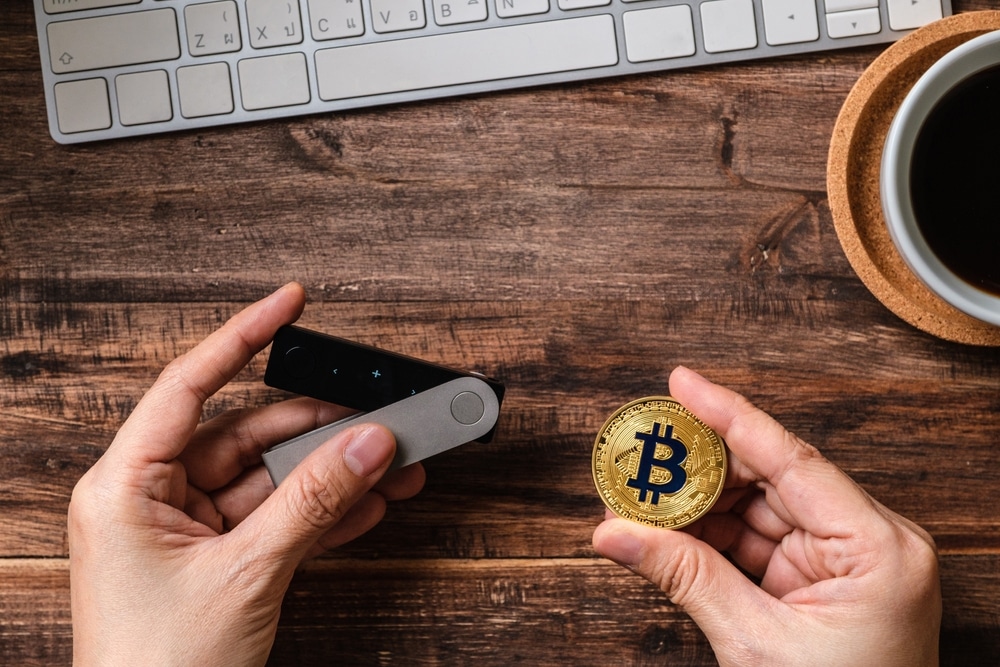Crypto investments come with several risks, from extreme volatility to regulatory uncertainty, scams, and hacks. Recent data by Chainalysis indicated that over $3 billion worth of digital assets were stolen in 2023 through hacking incidents.
This calls for the need for secure wallets to store cryptocurrencies. In recent months, there has been a growing demand for hardware wallets as they are considered safe since they maintain digital assets in an offline environment, thus protecting them from cyber criminals.
In this article, we will explore hardware wallets and show you how to use them.
📈🤖 Unlock unparalleled trading potential with GPT Stocks Master AI! Revolutionize your portfolio, leveraging real-time insights and predictive analytics. Don’t miss out – step into a world where precision and profitability meet. Ready to transform your trading journey? Click “Master My Trades” now for your exclusive access! ✨🚀📊
Exploring Crypto Hardware Wallet
Cryptocurrency wallets are grouped into two: cold and hot wallets. A hot wallet offers online storage of digital assets, while a cold or hardware wallet is a physical device that lets you store crypto offline. As mentioned, hardware wallets are considered safer than hot wallets since they aren’t connected to the internet or interact with potential web viruses.
Most hardware wallets take the form of a USB drive. They usually support a wide range of cryptocurrencies and NFTs compared to hot wallets.
How a Hardware Wallet Works
Before we learn how hardware wallets work, it’s vital to understand cryptocurrency wallet keys.
Private and Public Crypto Wallet Keys
Crypto data lives on various blockchains, and wallets that support these chains store that data. Each wallet has two types of keys: a public key and a private key. The former can be compared to a bank account number because anyone can access it, while the latter is like an ATM PIN that the wallet owner must secure.
A private key gives you access to your digital currencies. So, you should not share it. Hardware wallets store the private keys, which users need to approve transactions.
Are Hardware Wallets Self-Custodial?
Yes! When you store your cryptocurrencies in a hardware wallet, you have total control over them. By comparison, when you hold your digital assets on a centralized exchange like Binance or Coinbase, you transfer custody to the platform. This makes your crypto vulnerable to hacks in case the exchange encounters a cyberattack.
To carry out a crypto transaction on a hardware wallet, you need your private key to sign it. A cryptocurrency bridge facilitates the signing process. Moreover, it connects the hardware wallet to the blockchain so that the transaction can be completed.
A Step-by-Step Guide to Using Hardware Wallet
Follow these steps to use a hardware wallet:
Step 1: Buy the Hardware Wallet
Of course, you need to buy a hardware wallet from a reputable manufacturer before using it. Depending on your preferences, you can purchase the wallet from Ngrave, Ledger, or Trezor.
Step 2: Install the Wallet’s Software
Once you receive your hardware wallet, download its software on a mobile device or desktop.
Step 3: Connect Your Hardware Wallet to the Software
There are several ways of connecting your hardware wallet to the installed software. For example, you can connect using Bluetooth or a USB cable.
After successfully linking your hardware wallet to the software, follow the instructions provided to set up a new wallet. You will be required to come up with a unique password and store the generated recovery phrase safely.
Step 4: Add Funds
After creating a new wallet using the software, use the “deposit” feature to add funds. You can do this by copying the wallet address or scanning the QR code. If you copy the address, paste it on the source of the funds, then enter the desired token amount to be deposited and initiate the transaction.
Step 5: Confirm and Sign Transactions
When transacting in a hardware wallet, you must confirm the transaction details before approving it. After signing the transaction, you can monitor the progress using a blockchain explorer.
It is vital to disconnect your hardware wallet from the software once you complete a transaction.
Are Hardware Wallets Really Secure?
While we can agree that no single security measure guarantees total safety, hardware wallets offer better safeguards than hot wallets.

